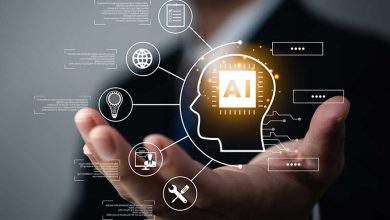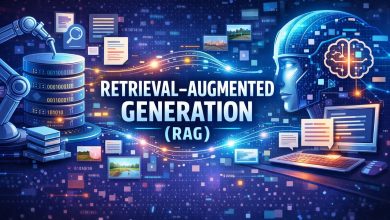
Many of us have seen firsthand the capabilities of Generative AI in the construction arena. Whether it’s in the area of design and planning, scheduling and project management, or predictive analytics, the power of GenAI to handle everyday tasks efficiently, quickly and accurately has been remarkable.
Now, before our astonishment has even had time to settle, we have “agents” emerging as the next frontier in Generative AI, and for good reason. They act as intelligent layers built on top of language models, for the purpose of gathering and interpreting data, orchestrating tasks, and, when permitted, making autonomous decisions.
The attention focus on Generative AI agents has primarily been centered around large language models (LLMs). However, agents are rapidly becoming critical tools in industries like construction – industries that are defined by complexity, chaos, and unstructured data.
AI Agents Defined
The term “AI agent” has been bandied about rather liberally, so let’s first get a bead on exactly what it is. Simply put, an AI agent is a language model paired with tools and APIs that allow it to perform tasks, both autonomously and semi-autonomously.
Unlike standard LLMs, which can summarize documents or answer questions, agents break down a problem into multiple steps; execute those steps using specialized tools (via function calling, a process that allows the LLM model to call external tools or APIs to perform specific tasks, instead of trying to do everything itself using just text generation); and synthesize the results into actionable outputs. An agent might be akin to a general contractor, who coordinates between electricians, plumbers, and carpenters – but where the LLM has the role of master carpenter.
Data in construction is notoriously messy, ranging from blueprints to Gantt charts to spreadsheets to text notes. Standard LLMs struggle in this environment, where answers aren’t cleanly contained in a single document. Conversely, AI agents can loop through complex tasks, verify information, and simulate multiple outcomes. This multi-functional capacity is exactly what the construction industry needs.
Why Construction Needs Agents
The majority of construction projects rely on multiple fragmented systems. Different teams use different tools, data formats are inconsistent, and productivity can be extremely hard to measure or predict. Enter AI agents, which can serve as connectors across these disparate systems, linking them with APIs and automating decisions.
Here’s a perfect example. Someone might ask, “If I double the number of electricians on my project, how will that affect project duration?” A language model alone might not provide an accurate answer. An agent, however, could:
- Pull productivity rates from a historical database
- Update the Gantt chart accordingly
- Recalculate project timelines
- Present the new completion dates
These are all doable steps, but traditionally each would require time-consuming manual input. This workflow becomes automated when an AI agent enters the scene.
It’s important to note that agents can’t function in a vacuum. To deploy them effectively, companies need strong foundational infrastructure:
- Interconnected Systems: Your software must expose APIs or be compatible with API development. Without this capability, agents can’t fetch or push data.
- Data Readiness: Nothing gets done without clean, structured, and reliable data. Because agents operate on data, garbage in is going to mean garbage out.
- Automation Frameworks: Scripts or integrations need to exist for agents to perform specific tasks. Without well-defined instructions or workflows, agents can’t act efficiently.
Powerful But Fragile
Despite their promise, agents can break things — not figuratively, literally. Since they perform multiple steps across systems, a single error can ripple across the entire process. Proper “sandboxing” or human review before agents are granted full control; the consequences of skipping this step can catastrophic. Therefore, best practices involve implementing guardrails:
- Read-Only Mode for data retrieval
- Sandbox Environments for testing
- Human-in-the-Loop validation before executing major changes
Big tech companies like Microsoft (via Copilot), OpenAI, and Anthropic (Claude) are actively experimenting with agents. Some demos show agents performing impressive tasks like building slide decks or coding websites. Yet, these tools are far from perfect. If a language model is 80% accurate per step, and your task requires 10 steps, chances are at least two will fail.
This is the primary reason that AI agents haven’t yet found their way into mainstream construction software as first-class features. They are still experimental, making them useful for simulation and augmentation but not trusted execution – at least not yet.
The Real Value: Time Savings
The transformative power of agents in construction isn’t about achieving the impossible; it’s about doing the possible faster and more often. Project managers routinely make trade-offs about which scenarios to explore because each one might take hours. Agents, running in the background, can allow for five or six scenario analyses in the time it would take to complete just two.
Even though slow by AI standards, agents free up human time by eliminating bottlenecks. A user can send a complex query to an agent and allow it to process the task in the background, letting the user move to other tasks.
Construction firms must assess their readiness before they plunge headfirst into the AI agent pool. Implementing agents isn’t as simple as flipping a switch. First, you need:
- Clean, accessible, and accurate data
- Interoperable systems with open APIs
- A clear understanding of what automation is possible and desirable
Once those foundational blocks are in place, you can begin exploring AI implementation. Only after AI infrastructure is solid can agents be layered on top to amplify those capabilities.
Start with Agents, Prepare for Everything
Agents are exciting; they promise transformative speed and scalability in decision-making. But to unlock their potential, organizations must do the unglamorous work of data cleansing, system integration, and workflow mapping.
A comparison would be the act of building a skyscraper. Agents are the crane that speeds up construction; but before the crane arrives, you need to clear the site, pour the foundation, and install the scaffolding. Skip those steps, and the crane might collapse under its own weight.
In the race toward AI maturity, agents aren’t the first step — they’re the reward for doing all the hard groundwork right.
###
ABOUT THE AUTHOR
Daniel Hewson is the Data Capability Manager for Elecosoft. He has a strong background in mathematics, computer science, and engineering, with a focus on machine learning and how to apply it to real-world processes, including construction. Follow him on LinkedIn.






